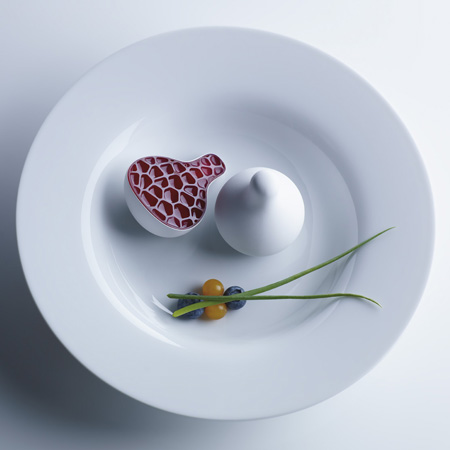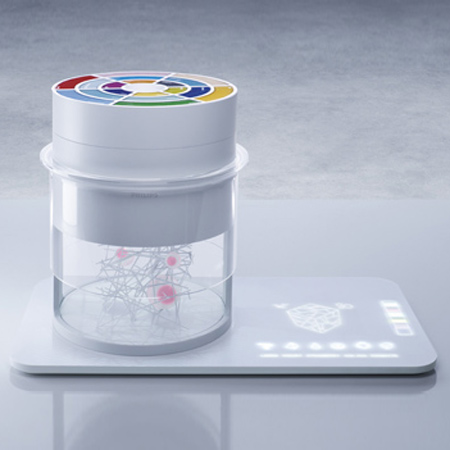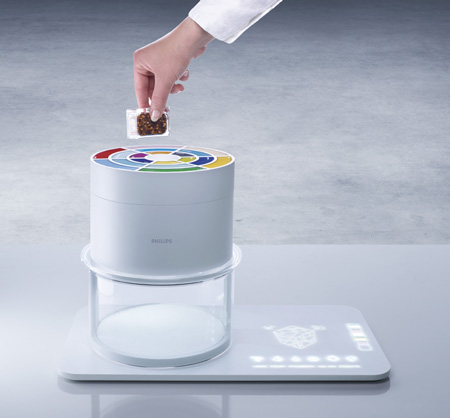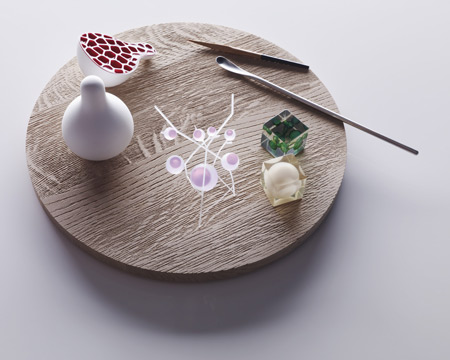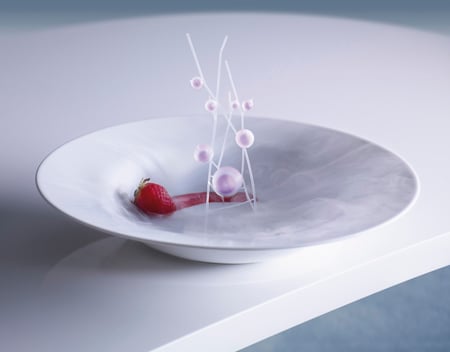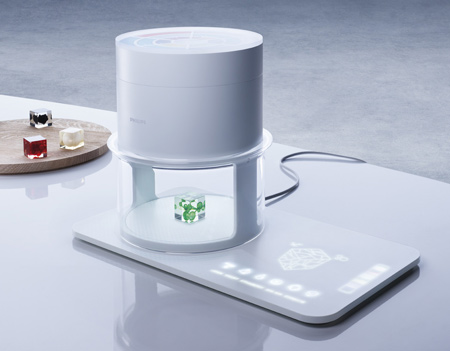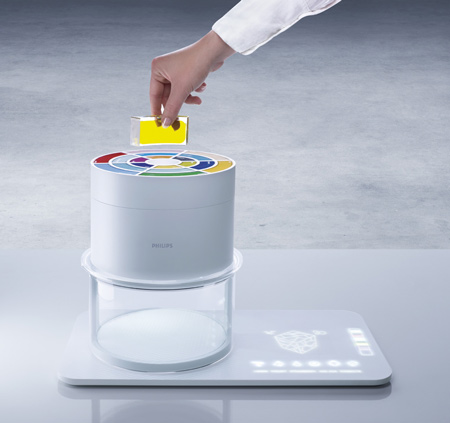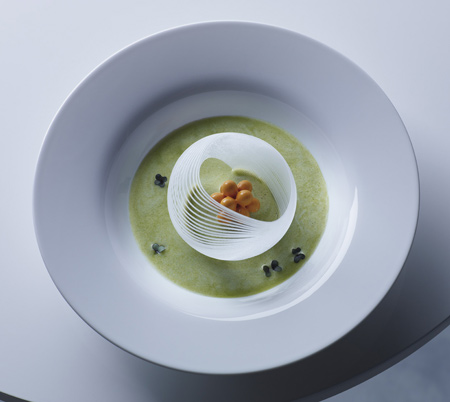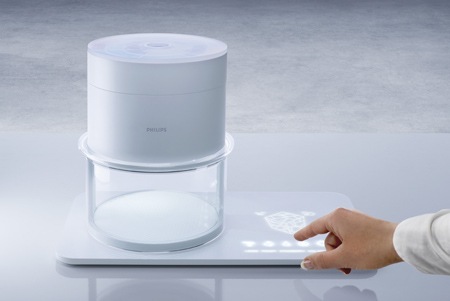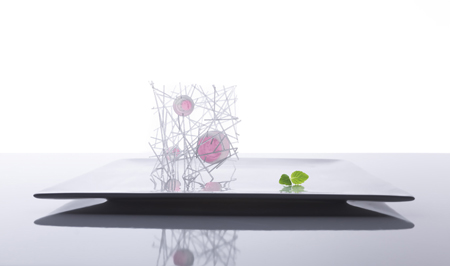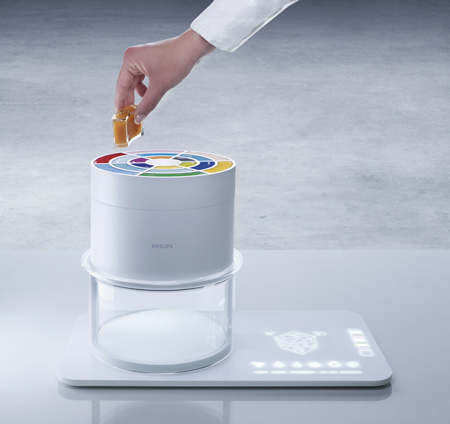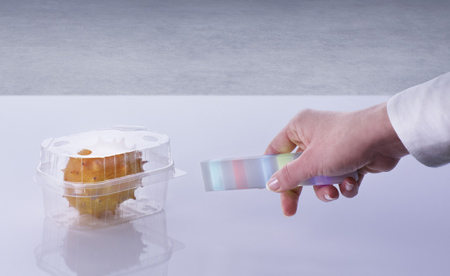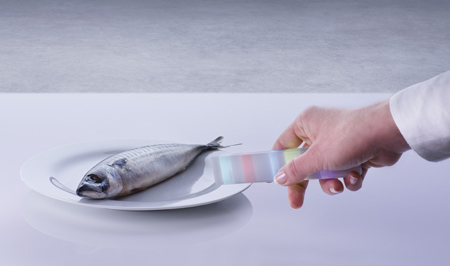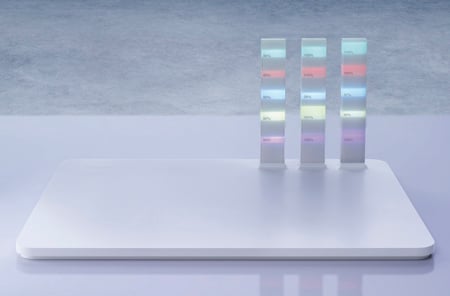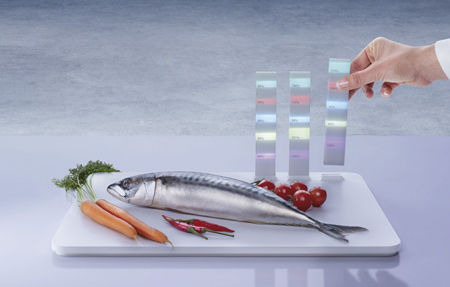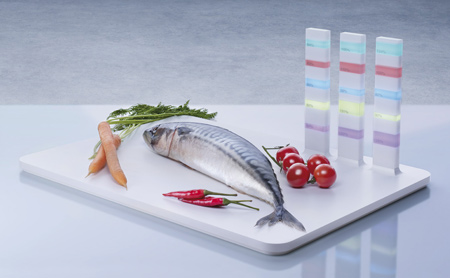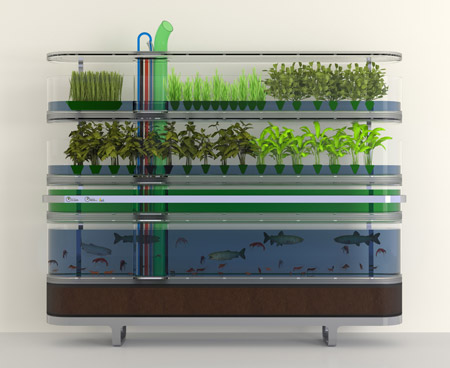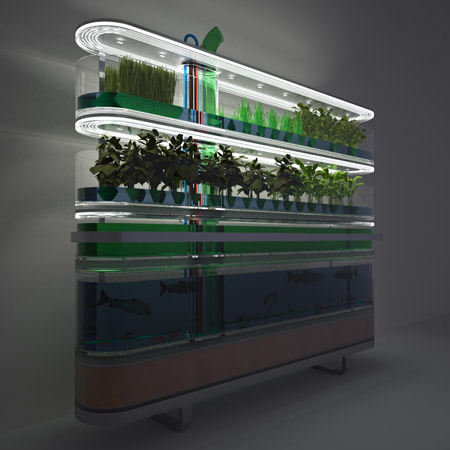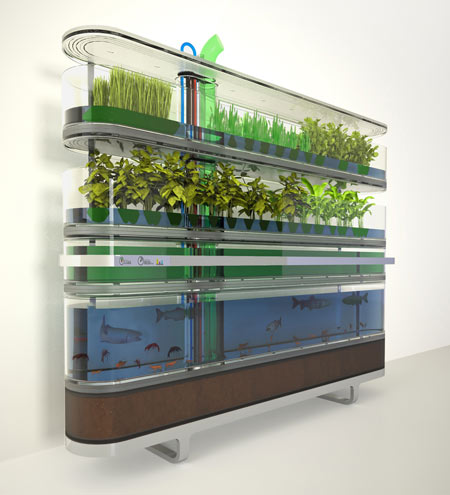bigvlada
Advanced
Philips Design’s ‘Food Probe’ Promotes Healthy Eating With 3 Concepts
by Olivia Chen, 10/28/09

Home Farming
Pesticides. Genetic-modification. Mistreated animals. It could just about kill anyone’s appetite to hear about all the horrible news about food production. Fortunately, the emerging food revolution focuses on both health and re-establishing the connection between people and the food they eat (making it harder to abuse our food sources). Designers are both leading and answering this shift in interest. Philips Design has begun an investigation called ‘Food Probe’ that looks at current social trends and how this may affect the way that people will eat in the future — and how this will manifest in design. Their investigation includes three parts: a self-contained farm for the kitchen, a nutrition farm and a high-tech cooking device.

Diagnostic Kitchen
‘Home Farming’ is arguably the most interesting part of this investigation, in part because it seems the least foreign, with a less-techy version already in existence. The unit is a self-contained and self-reliant food growing unit that combines hydroponics and aquaculture, otherwise known as aquaponics. Its cabinet-like shape contains room for ’shelves’ for planting vegetable and herbs, and a bottom level for fish, making this tech-gardening device ready to fit snugly into any home and a possible replacement for its backyard version.
Aquaponics is the combination of aquaculture (fish farming) and hydroponics (soilless plant culture). In aquaponics, the nutrient-rich water that results from raising fish provides a source of natural fertilizer for the growing plants. As the plants consume the nutrients, they help to purify the water that the fish live in. A natural microbial process keeps both the fish and plants healthy and helps sustain an environment in which they both can thrive. Essentially, aquaponics is organic gardening, but without the dirt. – Aquaponics.com
While I admit that I understand little about the inner-workings of the nutrition monitor and high-tech cooking device, the idea that we could gain personalized insight into our nutritional needs is a promising prospect for achieving a healthier society, especially considering that the cooking device would be able to re-mix foods into different consistencies that could mimic a completely different type of food.
Philips Design has recognized that the re-structuring the way we grow and consume food over the next 15-20 years is a serious one, and with their Food Probe, have presented us with a three-pronged approach to food systems of the future.



Izvor: Inhabitat
http://www.inhabitat.com/2009/10/28/philips-design-food-probe/
by Olivia Chen, 10/28/09

Home Farming
Pesticides. Genetic-modification. Mistreated animals. It could just about kill anyone’s appetite to hear about all the horrible news about food production. Fortunately, the emerging food revolution focuses on both health and re-establishing the connection between people and the food they eat (making it harder to abuse our food sources). Designers are both leading and answering this shift in interest. Philips Design has begun an investigation called ‘Food Probe’ that looks at current social trends and how this may affect the way that people will eat in the future — and how this will manifest in design. Their investigation includes three parts: a self-contained farm for the kitchen, a nutrition farm and a high-tech cooking device.

Diagnostic Kitchen
‘Home Farming’ is arguably the most interesting part of this investigation, in part because it seems the least foreign, with a less-techy version already in existence. The unit is a self-contained and self-reliant food growing unit that combines hydroponics and aquaculture, otherwise known as aquaponics. Its cabinet-like shape contains room for ’shelves’ for planting vegetable and herbs, and a bottom level for fish, making this tech-gardening device ready to fit snugly into any home and a possible replacement for its backyard version.
Aquaponics is the combination of aquaculture (fish farming) and hydroponics (soilless plant culture). In aquaponics, the nutrient-rich water that results from raising fish provides a source of natural fertilizer for the growing plants. As the plants consume the nutrients, they help to purify the water that the fish live in. A natural microbial process keeps both the fish and plants healthy and helps sustain an environment in which they both can thrive. Essentially, aquaponics is organic gardening, but without the dirt. – Aquaponics.com
While I admit that I understand little about the inner-workings of the nutrition monitor and high-tech cooking device, the idea that we could gain personalized insight into our nutritional needs is a promising prospect for achieving a healthier society, especially considering that the cooking device would be able to re-mix foods into different consistencies that could mimic a completely different type of food.
Philips Design has recognized that the re-structuring the way we grow and consume food over the next 15-20 years is a serious one, and with their Food Probe, have presented us with a three-pronged approach to food systems of the future.



Izvor: Inhabitat
http://www.inhabitat.com/2009/10/28/philips-design-food-probe/

